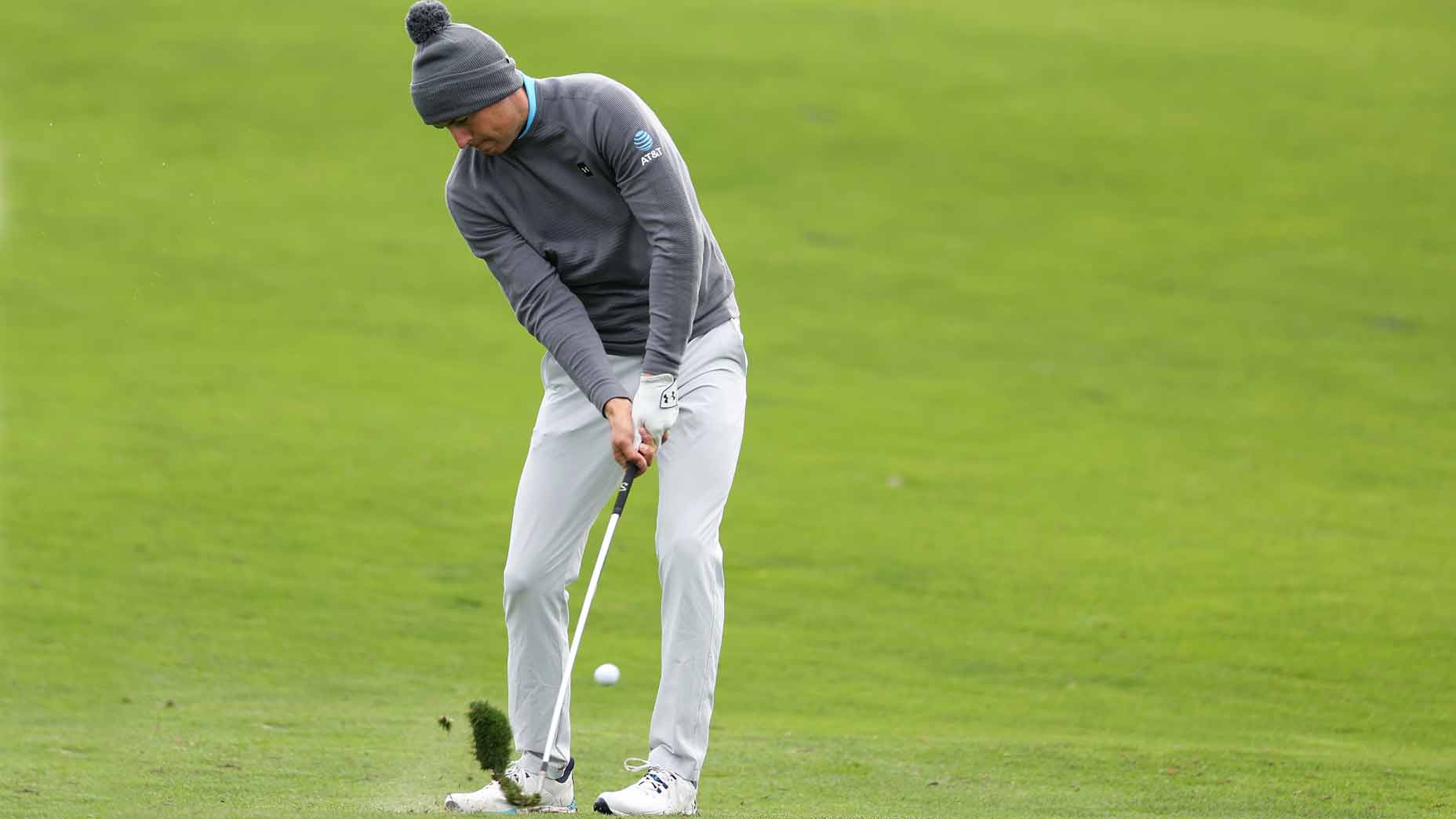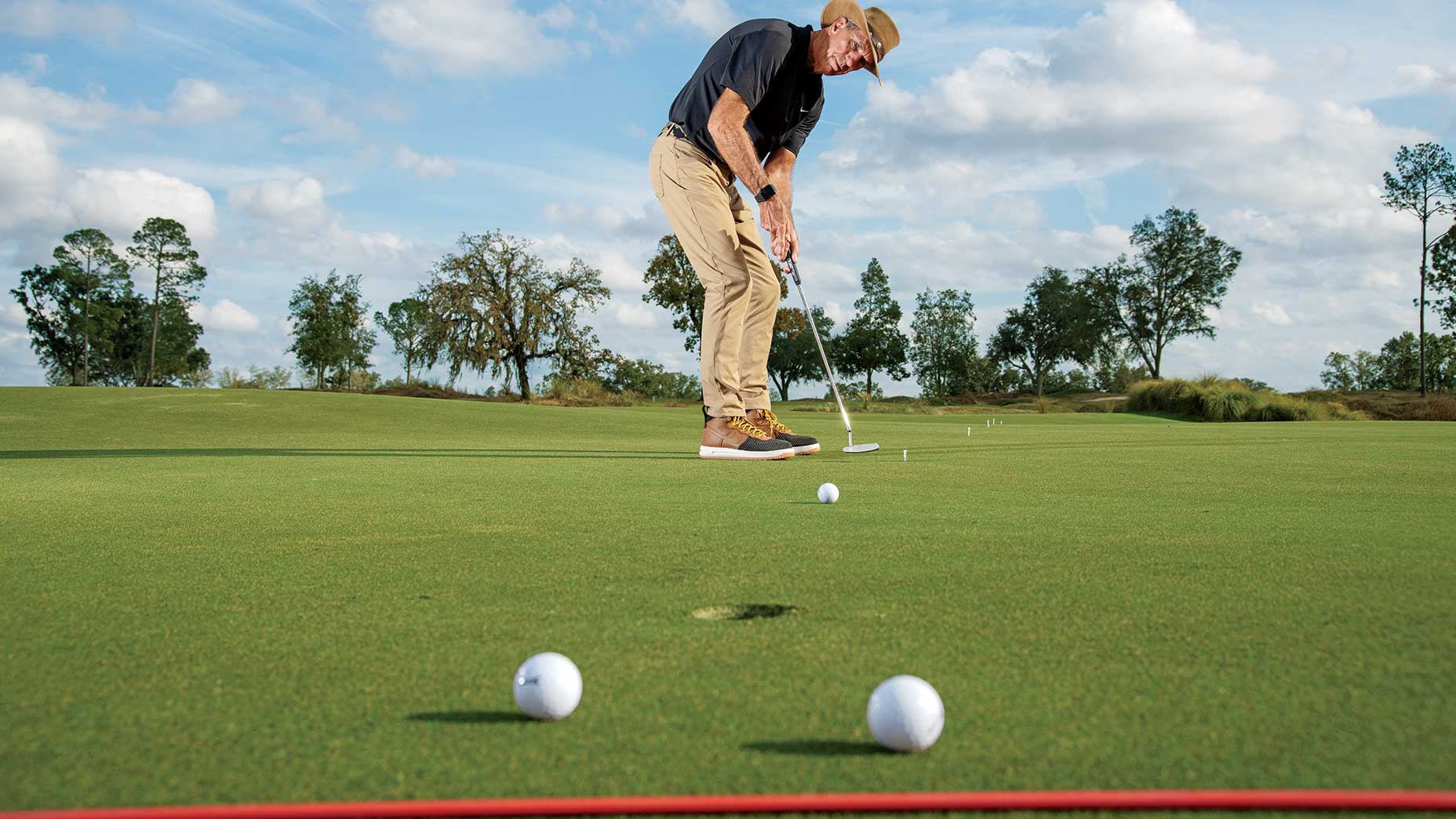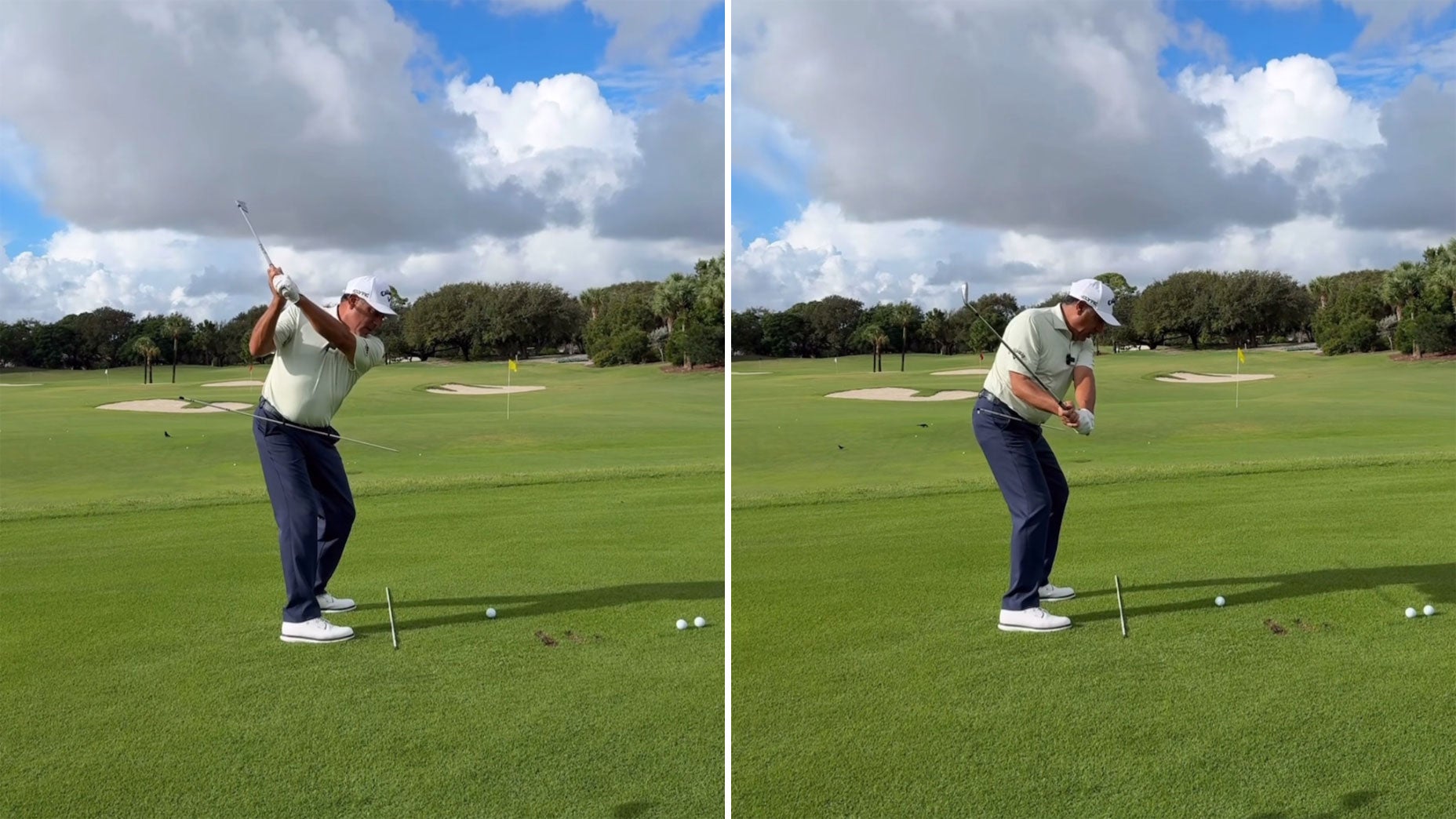Golfers can learn a lot from their divots. It can tell you your swing path and the low point in your swing, plus help you identify if your clubhead is cutting through the turf correctly. Once you learn to analyze your divots, you can add an entirely new layer to your range sessions.
Tour pros taking divots can look like a work of art. Ball after ball, they cut through the turf sending perfectly cut pieces of sod flying down the range. These pellets are so perfect that some fans even smuggle them out of events as souvenirs.
When recreational players hit the range, the results aren’t so pretty. Perfect pellets flying down range are the exception rather than the rule, and often times there isn’t any divot at all.
This typically happens because weekend warriors aren’t skilled enough to produce the type of contact that higher-level players do. If this sounds like you, GOLF Top 100 Teacher Cameron McCormick has a great drill to teach you how to take a proper divot.
How to take divots like a pro
If you look at Tour pros at address and then at impact, the images do not look the same. At address, their weight is evenly distributed between both sides of their bodies, and they are perfectly balanced. But when they come into impact, much of their weight has shifted onto their lead side.
“That difference, it’s the reason they strike it so pure,” McCormick says.
To teach yourself this weight shift, grab two towels and head to the range. Place one towel one and a half clubhead lengths behind the ball and another a couple clubhead lengths in front of it. Then, hit the ball. Your goal here is to avoid the towel behind the ball and then clip — and actually move — the towel in front of it.
“The objective is to shift our body mass some amount onto our lead side to where the handle visually looks like it’s over the top of the front towel,” McCormick says. “You’re going to look down, you’re going to see a divot.”
If you can teach yourself to miss the back towel and collect the front towel on the way through, you should start to see clean, Tour-level divots in front of the ball.










